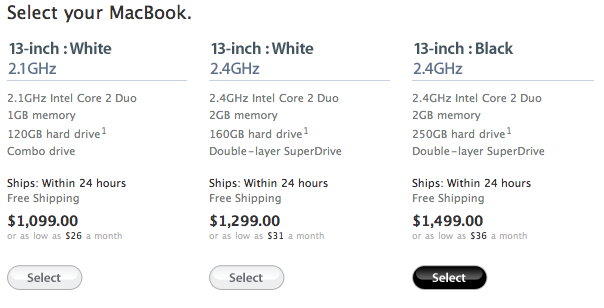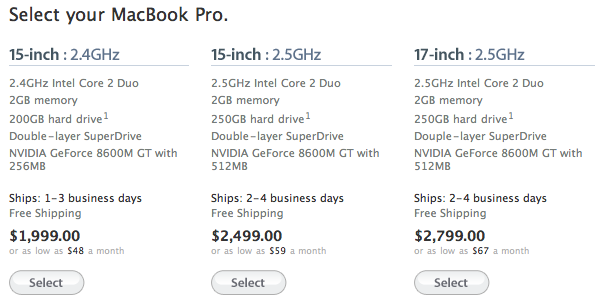History lesson: Back on June 6, 2005, Apple announced that they were transitioning away from the PowerPC processor line to ones made by Intel. Rumblings formed quickly – *how long until they drop PowerPC support from the OS?*
TUAW wrote yesterday about “10.6” being unveiled at WWDC next week:
> We have also learned that OS X 10.6 may go gold master by December 2008 in an effort to start shipping it in January ’09 at Macworld Expo. Mac OS X 10.6 will be a milestone release for Apple, as it will leave the PowerPC behind: a fully 64-bit clean, Intel-only Mac OS X.
John Gruber weighed in this morning:
> I still think it seems too soon by at least a year to drop PowerPC support — especially for G5s, which are still extremely capable machines by today’s standards — but that’s the word on the street.
Gruber’s on the right track here, but not because the machines are still capable (which they are).
Consider two truths about Applecare:
* Applecare typically comes in two quantities: the free one-year that comes with each machine, and a three-year extended service warranty.
* Applecare provides support for all point revisions of the current operating system and the final point release of the previous operating system.
As far as I’m aware, Apple has never released an OS that cannot by installed on computers that fall within the three-year window provided by Applecare. Once a machine falls outside of that window, a machine is not guaranteed to run any new major OS revisions.
The PowerMac G5 was the final machine to be killed in the Intel transition – a slight irony given that the developer kits for the Intel transition were in PowerMac towers. The MacPro was introduced to market on August 7, 2006.
For these reasons, I would not expect Apple to kill off PowerPC support in their OS until after August 6th, 2009.
(An aside: that’s also the day that Classic finally becomes unsupported, as there won’t be any Applecare eligible machines that can still run Classic.)

